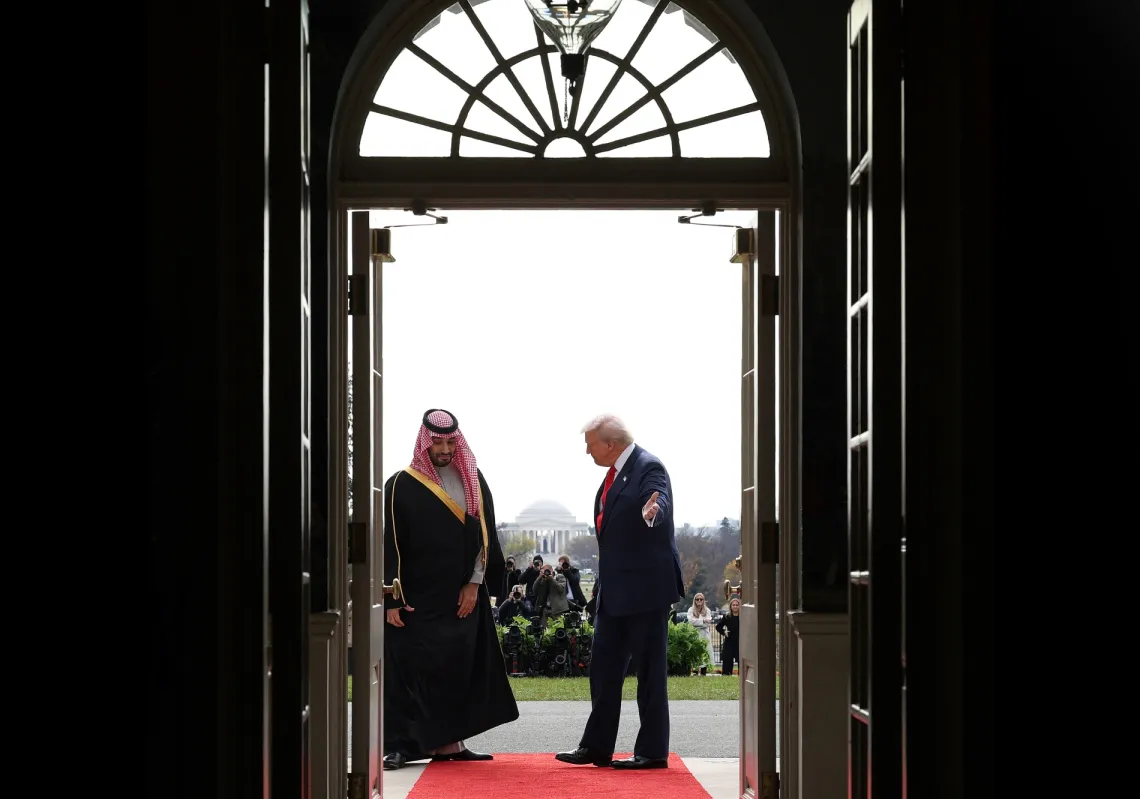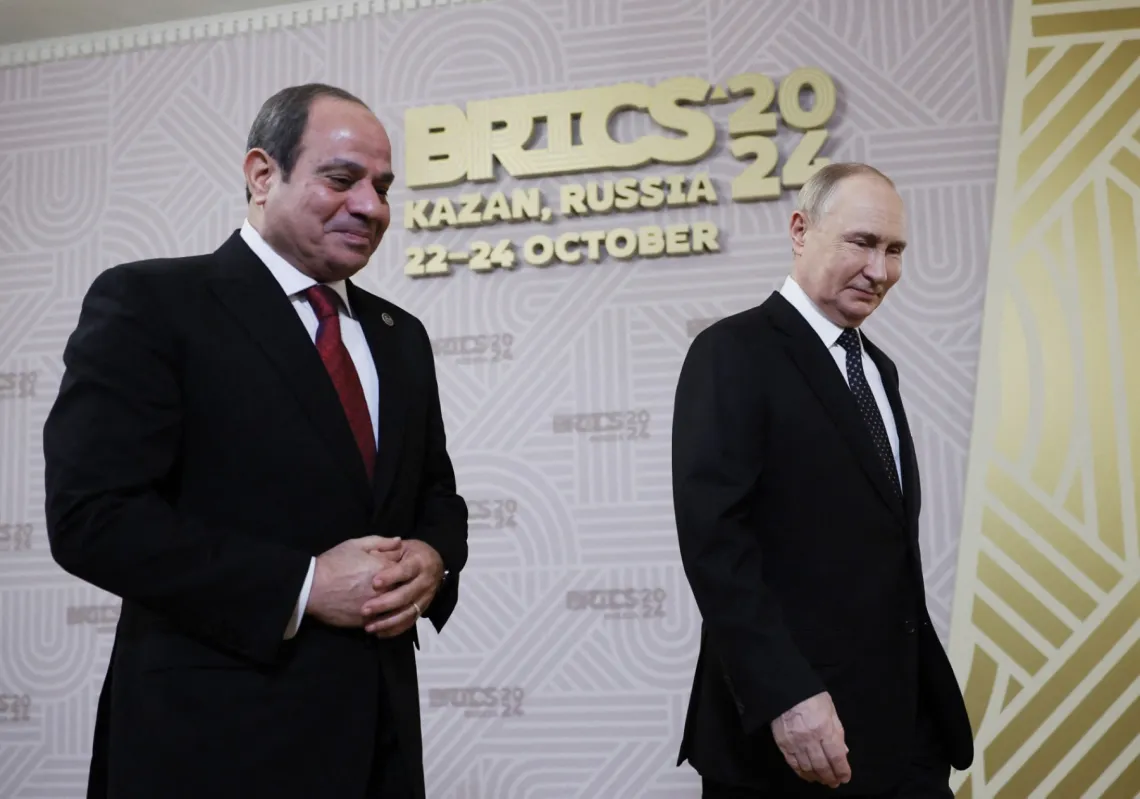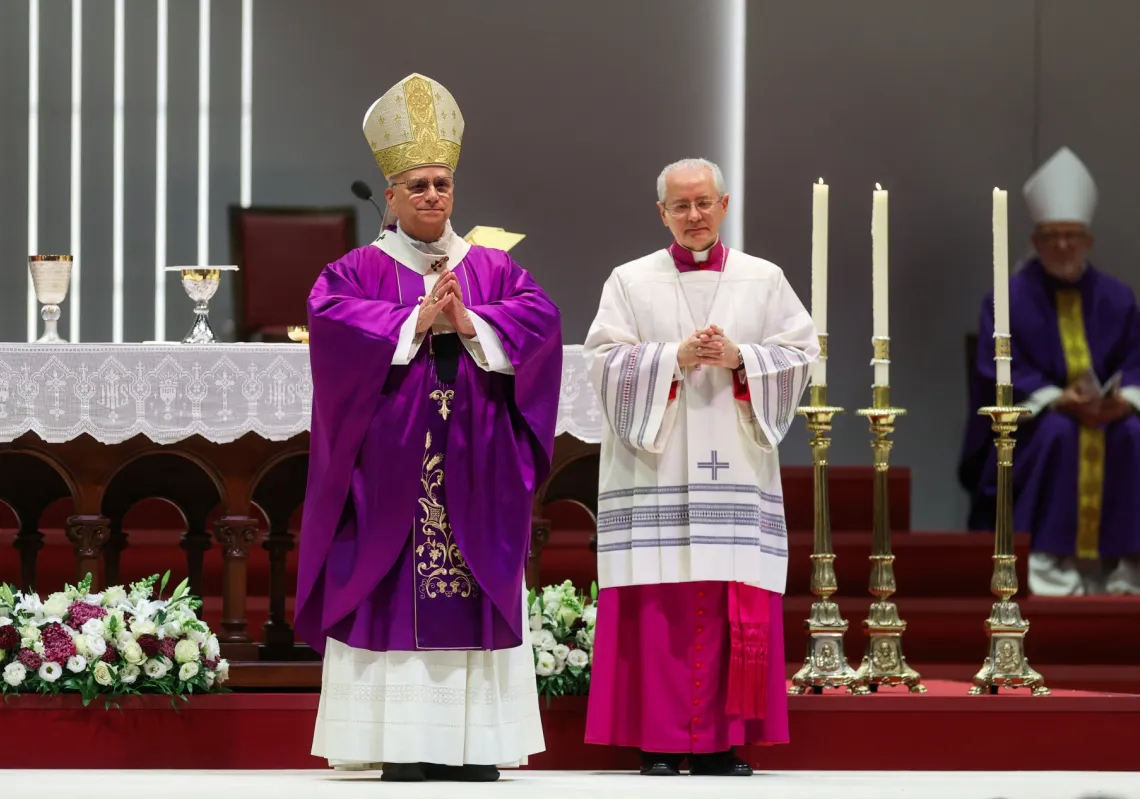“We’re putting diplomacy first and seeing where that takes us,” US President Joe Biden said during his first meeting with Israeli Prime Minister Naftali Bennett in the White House on August 27. “But if diplomacy fails, we’re ready to turn to other options,” Biden added. These statements expressed the US policy not only towards the Israeli ally but also on Iranian behavior in the region. The perilous Iranian policies range from developing a nuclear arsenal that threatens regional security and stability, to Tehran’s intervention in the neighboring countries’ affairs through its affiliates and proxies.
In light of the announced U.S. approach which gives priority to diplomacy via resuming the 5+1 negotiations, the United States has not overlooked other options it can resort to if the diplomatic approach fails due to obstacles or stumbles brought by the dodgy Iranian attitude. However, Biden didn’t reveal what these options could be, which raises many questions about their nature and forms; Are they economic or military options, or are they both? In case the United States resorted to the military option, will it take the form of direct military strikes, or will take a different approach? Will these choices be taken subsequently or simultaneously? Will the new rightist Israeli government have an opportunity to follow the American approach, or will it adopt the Netanyahu government’s method of launching unannounced direct strikes against Iran’s nuclear program and interests in the region as it did in Syria?
In an attempt to answer these questions, we explore the American options, the Israeli stance, and the Iranian response according to the following two pivotal points:
First: Iran’s Nuclear Program According to American and Israeli Perspectives
One threat, Different Policies
It is not an overstatement to say that the US vision, whether under a Republican administration as with Donald Trump or Democratic as with Barack Obama and now Biden, believes that Iranian attempts to develop a nuclear program pose a threat to the regional security and the US interests in the region. This comes in line with the Israeli view of Tehran as the first threat to Israel’s security. But the difference is clear in the way of tackling the Iranian quest. Israel believes it is important to direct an abortive strike on Iran’s nuclear program, in an operation that resembles targeting the Iraqi and Syrian nuclear projects in 1981 and 2008 respectively, fearing that Tehran can take further steps towards having a nuclear bomb, which will be the most dangerous threat to the region, particularly under the policies adopted by Tehran since its 1979 revolution. The Iranian principle of exporting the revolution would mean intervening in the internal affairs not only of the neighboring countries, but also elsewhere, which may mean Europe, Africa, and some Latin American countries. According to numerous reports and studies, Iran’s proxies and affiliates exist in these areas.
Therefore, Israel insists on its stance against Iranian development of nuclear weapons, as Israeli PM Bennett said on the sidelines of his meeting with Biden, “We’ve developed a comprehensive strategy that we’re going to be talking about with two goals: The first goal is to stop Iran on its regional aggression… and the second is to permanently keep Iran away from ever being able to break out to a nuclear weapon.” He also confirmed that the Israeli stance cannot be changed in this regard, and added, “We will never outsource our security. It’s our responsibility to take care of our fate. But we do thank you for the tools and the backing you’ve been giving us and you’re giving us,” in an explicit remark that Israel may be obliged to take stricter options on Iran if the U.S. didn’t take the Iranian threat more seriously.
The Israeli Premier’s stance reflects the domestic pressures he is facing, prominently the Netanyahu-led opposition camp’s criticism by which the former PM tries to outbid Bennett’s performance on Iran and describes it as weak.
On the other side, the American perspective on addressing the Iranian policies shows discrepancies between Democrats and Republicans. The Republican US administration was aligned with the Israeli vision despite taking some distance from it. Indeed, the Republican administration under Donald Trump scrapped the nuclear deal of the Obama administration, but it didn’t opt for the military option against the Iranian threats. Instead, Trump’s administration decided that economic sanctions are more efficient along with turning a blind eye to undeclared cyberattacks by Israel against the Iranian nuclear program, and some military strikes against Iranian targets in the sea, such as Iranian oil tankers, or some of its representatives and proxies in the region.
On the contrary, the U.S. Democratic administration still sees diplomacy as a priority in addressing Iranian threats. This explains President Biden’s approach on emphasizing its priority, particularly that he was Obama’s Vice President during the signing of the nuclear deal, and he wants to validate his view on the priority of diplomacy on Iran.
Therefore, Biden’s current policy is a resumption of this perspective which seeks to revive the path of negotiations to reach understanding and agreement with Iran, without ruling out other options in case the negotiations fail. Although the nature and order of these options are not determined, they are almost confined to three options as follows:
- The economic option: It implies imposing further economic sanctions which would negatively affect Iran domestically and subsequently have repercussions on the country’s internal stability amid deteriorating living conditions due to the firmer economic blockade.
- The security option: This means launching cyberattacks against Iranian nuclear facilities that would disrupt the nuclear program, such as the attacks that targeted Natanz's nuclear facility in Iran.
- The military option: this means directing swift strikes against some Iranian facilities, in addition to some bases and affiliated militias in the region, such as American and Israeli attacks against Iranian militias in Syria.
In light of the aforementioned options, the U.S. administration can use all of them in a way that would force Iran to acquiesce to the negotiations and comply with its obligations. That would be in the interest of both parties (U.S. and Israel) in preventing Iran from obtaining nukes, as Biden said before the meeting, “We are going to discuss the threat from Iran and our commitment to ensure Iran never develops a nuclear weapon.”
Second: How to Confront Nuclear Iran?
Obviously, it is essential that the United States sets a comprehensive strategy of options in addressing Iranian threats, due to Iran’s intransigent positions on one side, and the past experiences in dealing with this issue on the other. President Biden should take advantage of the experiences he gained as Obama’s Vice President. The 2015 nuclear deal did not stop Tehran from pursuing nuclear weapons, but it rather enabled it to develop a ballistic missile system and achieve financial gains which helped it support its proxies in the region and strengthen its position in the negotiations.
Thus, it is imperative that the path of negotiations adopted by the U.S. coincides with other economic, security and even, if needed, military paths to force Iran to resume serious negotiations. The talks have already reached a stalemate due to Iranian hardline stances resulting from Iran’s view of the current moment as a golden opportunity to achieve various gains. As for the U.S. withdrawal from Afghanistan and its implications on the U.S. approach towards an intransigent Iran, the American failure in Afghanistan has given way to Iran, despite its differences with the Taliban, to achieve gains by contacting the movement. Tehran is turning a new page with the Taliban using the Shiite minority of Afghan Hazaras and the increasing volume of trade between both countries, as a new bargaining chip with the Americans to limit the U.S. pressure to comply with required guarantees on its nuclear program.
This means that resumption of negotiations, according to Iran, is a kind of distraction until enrichment is completed and a nuclear Iran is announced. If this happens, the interests of the US and its regional allies, particularly Israel, will be vulnerable to Iranian threats. Iran’s recent intransigent threatening rhetoric was clear in a tweet posted by the Secretary of Supreme National Security Council Ali Shamkhani, in which he wrote, “The first meeting between #Bennett and #Biden and the emphasis on using ‘Other Options’ against #Iran, while being an illegal threat to another country, establishes the Islamic Republic of Iran's right to reciprocal response to ‘Available Options.’”
In the field of action, Iranian threats were also various. Iran’s repeatedly denied responsibility for targeting American forces in the region, as in March 2021 missile attacks against Assad Airbase which houses most US forces of 2500 soldiers, or targeting Israeli tanker MT Mercer Street operated by Zodiac Maritime off the Omani coast, as well as attacking US regional allies via its proxies, such as Houthis’ continued assaults against Saudi Arabia. However, no one forgets the aggressive drone attack against oil refineries in Riyadh in March 2021, which “did not target the Kingdom alone, but more broadly the security and stability of energy supply to the world, as well as the global economy,” as stated by the Saudi Ministry of Energy following the attack.
In short, the threat posed by Tehran whether by developing a nuclear program or planting its proxies in the region and elsewhere is a real menace to regional and international peace and security. Its danger heightens amid the deconstructive crises faced by some regional countries on one side, and the transformation of world order represented in U.S. decline, Russian comeback, and Chinese emergence on the other. All that requires a rapid, comprehensive, and firm confrontation to achieve the targeted results. Previous negotiations with Tehran have proved the Islamic Republic’s ability to dodge, manipulate and buy time until it is able to be a nuclear country.
Thus, the first U.S.-Israeli summit witnessed a kind of American shift towards a stricter position against Iran due to Biden’s talk about “other options”. However, the President should not focus on diplomacy alone in the present time without considering other options which should be addressed in parallel to ensure that the resulting agreements and understandings will be binding and will restrict Iranian expansion on one side, and revive cooperativeness in the volatile region on the other. Otherwise, diplomacy will not yield satisfactory results or accepted transformation in Iranian policies.
Read more:
Israel-Iran Confrontation Ascends to a New Pitch of Escalation
Iran’s Bitter Options Following the Fakhrizadeh Assassination









